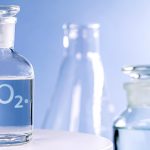Global water usage and resources
Global water demand is increasing sharply. One in nine people do not have access to clean water. That’s about 800 million people.
- In average, 200 people die every hour as a direct result of water pollution.
- According to the UN’s report – 2,000 hectares of farmland (8 square miles) are ruined daily by salt degradation. One of the main causes for soil salinity is the quality of the irrigation water.
- US $27.3 billion are lost annually due to loss of crop production, resulting from water stress or inadequate quality.
In many cases, in order for the water to be suitable for a specific intended use, water quality must be improved. Therefore, proper water treatment processes must be applied.
What do we use water for?
The three major water usage categories are – water used in agriculture, water for industrial use and domestic water. Globally, water used for agriculture accounts for 70% of the total usage. However, in developed countries, most of the water is used for industry, as can be seen in the chart below.
How Much Water Do We Consume?
Water consumption per capita (per person) may vary greatly between countries. Per capita demand includes the domestic, industrial, and public demands. Therefore, variations depend on the population, industrial activity, climate, water availability and cost etc.
For example, the average daily water consumption per capita is 92 gallons in the USA, 52 gallons in Europe, and only 5 gallons in the Sub-Saharan Africa.
Many products that we use or consume daily require water for their production. For example: 37 gallons of water are needed for one cup of coffee (water required for growing the coffee beans), the manufacturing of a cotton t-shirt requires 713 gallons, and one pound of beef requires 1,800 gallons (for growing the pasture to feed the cattle)!
The available water resources
There are about 326,000,000,000,000,000,000 (million trillion) gallons of water on earth. This amount of water is constant and does not change.
97% of the water on earth is sea water. Only 3% of the water is fresh, where 30.1% of the fresh water is groundwater, found in confined and unconfined aquifers. 0.3% of the fresh water is surface water, including lakes, rivers, and swamps. However, 68.7% of the fresh water are locked in icecaps and glaciers.
The following chart describes the distribution of Earth’s water:
They hydrological cycle
The water cycle, also known as the hydrological cycle, involves the circulation of water between the atmosphere, lithosphere (the rocky outer layer of the Earth), biosphere (living organisms), cryosphere (frozen water on the Earth, including glaciers, icebergs, and icecaps), and hydrosphere (water on the Earth).
Water enters the atmosphere by evaporation and transpiration by plants. Surface water changes its form from liquid to gas and evaporates to the atmosphere. Plants absorb water and release water (as gas) to the atmosphere in the transpiration process.
Water in the atmosphere then condenses and precipitates back on the land or ocean in the form of rain or snow. Water from rivers and streams can infiltrate into the ground and replenishes the groundwater.
Surface water and groundwater
Surface water is the water found above ground in rivers, streams, ponds, lakes, swamps, reservoirs, wetland, and other watercourses.
Groundwater is the water found beneath the Earth’s surface. It fills the spaces between soil particles and cracks within rocks. Groundwater originates from surface water and precipitations that infiltrate through the layers of soil and rocks.
Groundwater is found in two principal zones – the unsaturated zone and the saturated zone. The boundary between the two zones is the water table. In the unsaturated zones, pore spaces are filled in both air and water. Below the water table, in the saturated zone, all pores and cracks in the rock are filled with water.
An aquifer is a permeable rock layer that is completely saturated. It contains a large amount of water that can move easily.
Aquifers can be generally classified as confined and unconfined. Confined aquifers are aquifers that are overlain by impermeable rock or clay layers. Since they have impermeable layers above and below, their recharge area is usually distant from the aquifer. Due to the confining layers, the water in confined aquifers is held under pressure that is larger than the atmospheric pressure.
Unconfined aquifers have an impermeable layer at the bottom and a permeable layer above it. In this case, the upper boundary of the aquifer is the water table. Therefore, the unconfined aquifer is replenished directly by rainfall, snow, lakes, and streams.










